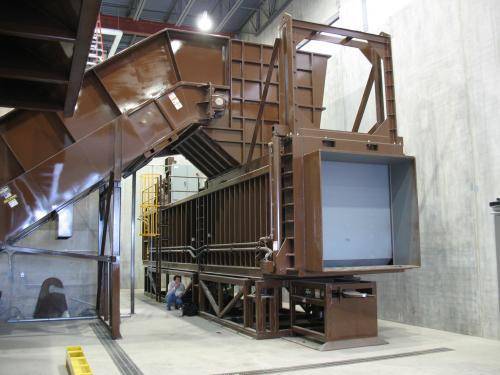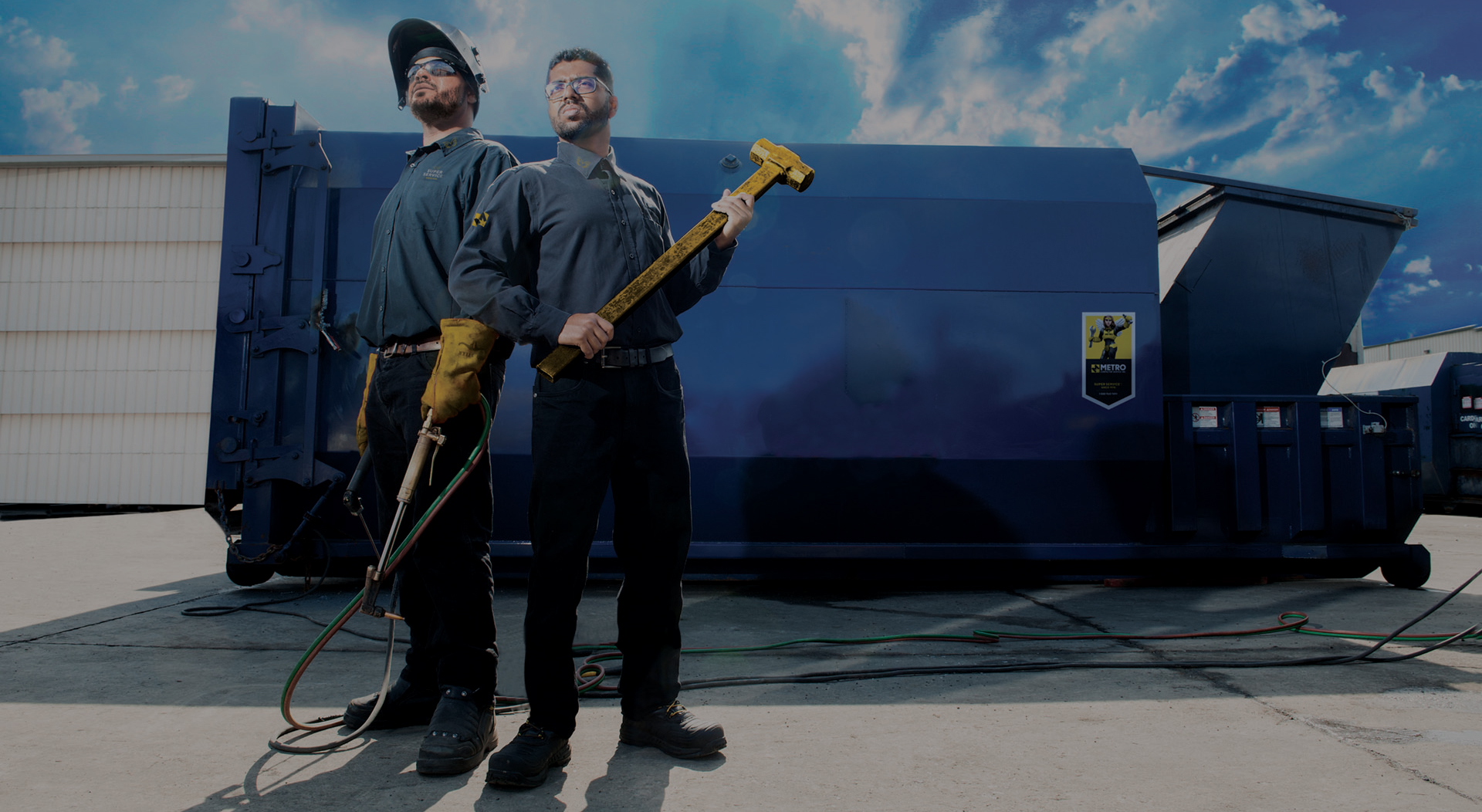Checking Out the Necessary Duty of Waste Tools in Modern Recycling Processes and Sustainable Waste Disposal Practices
The important function of waste devices in modern recycling procedures emphasizes its significance in accomplishing lasting garbage disposal methods. Advanced systems, such as automated sorting technologies and compactors, not just improve efficiency yet likewise play a critical role in lowering contamination prices and improving product healing. As the demand for even more lasting options expands, it is essential to check out how these technologies adjust to developing obstacles within waste monitoring. What ingenious advancements are on the horizon that could further change these procedures?
Relevance of Waste Devices
Why is waste equipment critical in the recycling procedure? The effectiveness of reusing operations hinges dramatically on the availability and performance of waste tools. This classification of equipment and devices is important for the effective collection, handling, and sorting of recyclable materials. By promoting the separation of products, waste tools minimizes contamination, which is vital in ensuring high-quality recyclables that can be reestablished right into producing cycles.
In addition, waste tools enhances operational effectiveness and safety within reusing facilities. Advanced machinery, such as shredders and balers, allows for the fast handling of big volumes of waste, minimizing labor costs and handling time. Additionally, the use of specialized tools reduces the danger of injury among employees by automating unsafe jobs.
In addition, the ecological effect of recycling is enhanced by effective waste tools. By enhancing the recycling procedure, facilities can considerably reduce the quantity of waste sent out to landfills, therefore adding to sustainability efforts. To conclude, waste equipment is not just a supplementary element of recycling; it is a fundamental element that drives efficiency, safety, and ecological stewardship in modern-day waste monitoring practices.
Kinds of Waste Tools
The performance of reusing procedures is very closely linked to the particular sorts of waste tools made use of in the procedure. baler rental. Numerous classifications of tools are integral to the collection, arranging, handling, and transportation of recyclable materials
To start with, collection tools, such as waste collection vehicles and bins, is necessary for collecting recyclables from numerous sources, including property, business, and industrial locations. As soon as accumulated, arranging devices, consisting of conveyor belts, shredders, and magnetic separators, plays a critical role in identifying different material types, ensuring that pollutants are eliminated prior to processing.
Handling tools, such as balers and compactors, additionally prepares materials for reusing by compressing and packaging them into workable dimensions. This not just enhances area yet additionally enhances transport efficiency. Additionally, specialized machinery like granulators and extruders is used for transforming materials right into multiple-use kinds, particularly in plastic recycling.

Duty in Recycling Processes
In reusing procedures, the function of waste equipment is crucial in ensuring efficiency and performance at every phase. This equipment incorporates a range of equipment created to deal with, process, and sort materials that are to i was reading this be recycled. The first phase involves collection and transportation, where compactors and balers play a vital function in optimizing the volume of products for transit, thus reducing functional prices.
As soon as at the recycling center, shredders and crushers enter into play, breaking down products into convenient dimensions appropriate for further handling. These machines contribute to improving the surface of recyclables, facilitating a lot more reliable product recovery. Arranging systems, equipped with innovative innovations such as conveyor belts and optical sensing units, make sure that products are properly divided by type, thus maximizing the top quality of the recycled final product.
In addition, specific equipment for processing specific products-- such as glass, plastics, and steels-- makes sure that each type is managed in one of the most efficient way. In general, the combination of sophisticated waste tools right into the recycling procedure not just simplifies operations but also substantially adds to the general healing rates of valuable products, highlighting its necessary function in contemporary view it reusing initiatives.
Effect On Sustainable Practices
Through the efficient operation of waste tools, reusing procedures substantially improve sustainable methods across different industries. This impact is realized through raised product recuperation prices, which reduce the need for virgin sources. By improving sorting and processing functions, advanced waste equipment minimizes contamination in recyclable materials, thus enhancing the top quality of recycled output. The reduction of waste sent to landfills is one more critical benefit, as it decreases ecological degradation and reduces greenhouse gas emissions related to disintegration.

Additionally, the integration of smart technologies in waste management systems allows for real-time information monitoring and analysis, bring about more informed decision-making and functional efficiencies. As sectors progressively focus on sustainability, the role of waste tools becomes extremely important in shaping techniques that line up with ecological stewardship and regulatory conformity. Ultimately, the harmony between waste equipment and reusing processes plays a crucial role beforehand wider sustainability objectives throughout neighborhoods and sectors alike.
Future Trends in Waste Monitoring
Emerging fads in waste monitoring are positioned to reshape the landscape of reusing and resource recuperation substantially. One of one of the most critical shifts is the assimilation of sophisticated innovations such as fabricated knowledge, artificial intelligence, and the Internet of Points (IoT) These advancements promote boosted arranging processes, improving the efficiency and precision of that site recycling operations. Smart waste bins geared up with sensors can check waste levels in real-time, enhancing collection routes and minimizing operational prices.
In addition, the round economic climate version is acquiring grip, promoting the idea of recycling products instead of throwing away them. This pattern motivates companies to make items with end-of-life considerations in mind, driving the demand for innovative waste administration remedies.
Moreover, public awareness and engagement in sustainability practices get on the surge, causing boosted participation in recycling programs. Federal government plans are additionally advancing, with more stringent guidelines on garbage disposal and incentives for sustainable methods.
As these trends assemble, they develop a much more efficient, lasting waste monitoring system that not only decreases environmental impact yet also cultivates financial development through source healing and development in waste tools. The future of waste administration looks promising, driven by modern technology and a dedication to sustainability.
Conclusion
In conclusion, waste tools plays an essential role in improving the efficiency and performance of modern-day recycling procedures. As waste management continues to advance, the significance of innovative waste equipment will certainly stay critical in achieving sustainability objectives and dealing with the obstacles of resource deficiency.